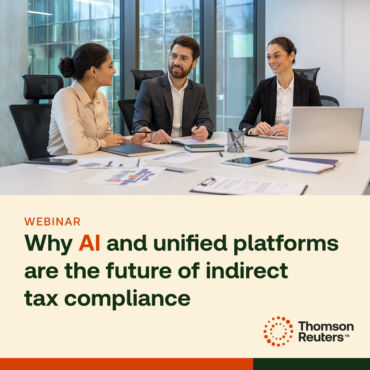The IRS has released Notice 2022-61, as published in the Federal Register on November 30, that provides guidance on the prevailing wage and apprenticeship requirements for clean energy tax credits provided under the Inflation Reduction Act (P.L. 117-169) [87 FR 73580, 11/30/2022].
Background on provisions
On August 16, 2022, President Biden signed the Inflation Reduction Act (P.L. 117-169), that included provisions for increased clean energy tax credits or deduction amounts if certain prevailing wage and apprenticeship requirements are met.
Specifically, the prevailing wage and apprenticeship requirements pertain to:
- Alternative Fuel Refueling Property Credit (Code Sec. 30C)
- Production Tax Credit (Code Sec. 45 and Code Sec. 45Y)
- Credit for Carbon Oxide Sequestration (Code Sec. 45Q)
- Credit for Production of Clean Hydrogen (Code Sec. 45V)
- Clean Fuel Production Credit (Code Sec. 45Z)
- Investment Tax Credit (Code Sec. 48 and Code Sec. 48E)
- Advanced Energy Project Credit (Code Sec. 48C)
- Energy Efficient Commercial Buildings Deduction (Code Sec. 179D)
The prevailing wage requirements pertain to:
- New Energy Efficient Home Credit (Code Sec. 45L)
- Zero-Emission Nuclear Power Production Credit (Code Sec. 45U)
When must compliance begin for tax credits?
To qualify for tax credits under the Inflation Reduction Act, taxpayers must comply with the prevailing wage and/or apprenticeship requirements where construction begins on or after January 29, 2023.
When construction begins is based on:
- Physical work test: when physical work of a significant nature begins.
- 5% safe harbor: when 5% or more has been paid or incurred for the total cost of the facility.
Additionally, the taxpayer must demonstrate either continuous construction or continuous efforts (continuity requirement) for beginning of construction to be satisfied regardless of which method to establish when construction begins is used.
There is a “Continuity Safe Harbor” that will deem a taxpayer as satisfying the continuity requirement if the qualified facility is placed in service no more than four calendar years after the calendar year during which construction of the qualified facility began for purposes of Code Sec. 45 and Code Sec. 48 (see above) and no more than six calendar years after the calendar year during which construction of the qualified facility or carbon capture equipment began for purposes of Code Sec. 45Q (see above).
What are prevailing wage rates?
For purposes of complying with the prevailing wage provisions of the Inflation Reduction Act, the prevailing wage refers to the minimum wage rates that taxpayers must ensure are paid to laborers and mechanics performing construction of a facility, project, property, or equipment and, in some cases, alteration or repair.
A prevailing wage is the combination of the basic hourly wage rate and any fringe benefits rate, paid to workers in a specific classification of laborer or mechanic in the area where construction, alteration, or repair is performed, as determined under the Davis-Bacon Act, as required contractors and subcontractors on federal contracts.
Prevailing wage rates are found in wage determinations published by the Wage and Hour Division (WHD) of the US Department of Labor (DOL) on http://www.sam.gov. A wage determination is the list of basic hourly wage rates and fringe benefit rates for each classification of laborers and mechanics in a predetermined geographic area, usually a county, for a particular type of construction. Questions regarding the applicability of prevailing wage rates may sent to: IRAprevailingwage@dol.gov.
What to do when prevailing wage rates are not available
The Notice provides that if prevailing wage rates have not been published for a particular geographic area or type of construction on http://www.sam.gov, the taxpayer must request a wage determination or wage rate by contacting the WHD via email at IRAprevailingwage@dol.gov. The request must provide the following information: (1) the type of facility, (2) facility location, (3) proposed labor classifications, (4) proposed prevailing wage rates, (5) job descriptions and duties, and (6) any rationale for the proposed classifications.
Recordkeeping requirements for prevailing wage compliance
The Notice states that taxpayers are required maintain records that establish the amount of gross income, deductions, credits as shown on any tax return. Regarding the prevailing wage requirements, the Notice requires a taxpayer to maintain records that are sufficient to establish that the taxpayer and the taxpayer’s contractor and subcontractor paid wages not less than such prevailing wage rates.
Records may include, but are not limited to, identifying the applicable wage determination, the laborers and mechanics who performed construction work on the facility, the classifications of work they performed, their hours worked in each classification, and the wage rates paid for the work.
What is a qualified apprentice for the purposes of the Inflation Reduction Act?
A qualified apprentice is an individual employed by the taxpayer, contractor, or subcontractor who is participating in a Registered Apprenticeship program registered under the National Apprenticeship Act.
What are the apprenticeship requirements?
The guidance notes that a taxpayer complies with the apprenticeship requirements for the Inflation Reduction Act clean energy credits as provided under Code Sec. 45(b)(8) if the following are met: (1) the Apprenticeship Labor Hour Requirements, subject to any applicable Apprenticeship Ratio Requirements; (2) Apprenticeship Participation Requirements; and (3) general recordkeeping requirements are adhered to establish that the Apprenticeship Labor Hour and the Apprenticeship Participation Requirements have been satisfied.
Specifically, the requirements apply to Registered Apprenticeship programs which is a program registered under the National Apprenticeship Act that meets DOL requirements. Employers may hire an apprentice by joining an existing group registered apprenticeship program or register their own apprenticeship program.
Apprenticeship Labor Hour Requirements (Code Sec. 45(b)(8)(C)) : To satisfy the Apprenticeship Labor Hour Requirements, apprentices must work a certain percentage of the total labor hours based on when construction began of the qualified facility:
-
- Construction began before January 1, 2023: 10% of total labor hours
- Construction began after December 31, 2022, and before January 1, 2024: 12.5% total labor hours
- Construction begins after December 31, 2023: 15% total labor hours
Example: A qualified facility begins construction on January 1, 2023. The total labor hours for the construction are 10,000 labor hours. To satisfy the Apprenticeship Labor Hour Requirements, apprentices must perform 12.5% of the total labor hours. Therefore, apprentices must perform 1,250 of the 10,000 total labor hours. The IRS does note in the guidance that a taxpayer may hire a contractor to help with the construction and the hours of the contractor’s apprentices may contribute to the Apprentice Labor Hour Requirements.
Apprenticeship Ratio Requirement (Code Sec. 45(b)(8)(B)): In addition to the Apprenticeship Labor Hour Requirements, compliance is required for any applicable requirements for apprentice-to-journeyworker ratios as established by the DOL.
Ratios are established with requirements of the DOL’s Office of Apprenticeship (OA) or an applicable State Apprenticeship Agency (SAA). 29 CFR 29.5(b)(7) require: “A numeric ratio of apprentices to journeyworkers consistent with proper supervision, training, safety, and continuity of employment, and applicable provisions in collective bargaining agreements, except where such ratios are expressly prohibited by the collective bargaining agreements.
The ratio language must be specific and clearly described as to its application to the job site, workforce, department or plant.” See Registered Apprenticeship FAQs for the Inflation Reduction Act for further information.
Apprenticeship Participation Requirements (Code Sec. 45(b)(8)(C)): Taxpayers, contractors, or subcontractors with 4 or more workers must employ one or more qualified apprentices to perform construction, alteration, or repair work for the qualified facility.
What does a good faith effort consist of?
A taxpayer will be considered to have made a good faith effort in requesting qualified apprentices if the taxpayer requests qualified apprentices from a registered apprenticeship program. The taxpayer must maintain records that establish that the request for qualified apprentices from a registered apprenticeship program was made and the program’s denial or non-response to that request.
Recordkeeping for apprenticeship requirements
Taxpayers must maintain records sufficient to establish that the Apprenticeship Labor Hour and the Apprenticeship Participation Requirements have been satisfied.
Additional resources
- Notice 2022-61: Prevailing Wage and Apprenticeship Initial Guidance Under Section 45(b)(6)(B)(ii) and Other Substantially Similar Provisions
- DOL, Prevailing Wage and the Inflation Reduction Act webpage with FAQs
- ApprenticeshipUSA, Inflation Reduction Act Apprenticeship Resources with FAQs
- System for Award Management (SAM.gov)
- Guide to Obtaining Wage Determinations
- Treasury Department press release, “Treasury Announces Guidance on Inflation Reduction Act’s Strong Labor Protections,” 11/29/2022
Learn more about the prevailing wage rates and the Inflation Reduction Act on Checkpoint Edge Payroll.










